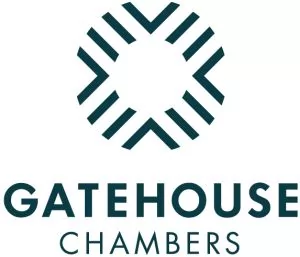- within Insolvency/Bankruptcy/Re-Structuring topic(s)
- in United States
- within Media, Telecoms, IT, Entertainment, Insurance and Family and Matrimonial topic(s)
- with readers working within the Insurance and Construction & Engineering industries
These case summaries first appeared in LexisNexis' Insolvency Case Alerter. They represent some of the more interesting insolvency decisions to have been published recently.
This summary covers:
- PSV 1982 Ltd v Langdon [2021] EWHC 2475 (Ch)
- Bedzhamov, Re [2021] EWHC 2281 (Ch)
- Re A Company [2021] EWHC 2289 (Ch)
- Lakatamia Shipping Company Ltd v Hsin Chi Su & Ors [2021] EWHC 1866 (Ch)
- In the Matter of Paragon Offshore Plc (In Liquidation) (Hammersley v Edwards)
PSV 1982 Ltd v Langdon [2021] EWHC 2475 (Ch)
Facts
D was director of Discovery Yachts Ltd ('DYL') between August 2016 and April 2017. DYL built and supplied yachts to Discovery Yachts Sales Ltd ('DYSL'). Mr France bought a yacht from DYSL in October 2015, which was delivered in January 2017 with alleged defects. By September 2017, D was a director of Discovery Yachts Group Ltd ('DYGL'). In September 2017, DYGL agreed with Mr France to repair the yacht.
DYL entered insolvent liquidation on 12 October 2017, putting D in breach of s 216 of the Insolvency Act 1986 ('IA 1986').
Mr France commenced proceedings against DYGL and DYSL in April 2018. DYGL entered administration in December 2019 shortly before trial. The automatic stay against DYGL was lifted on the first day of trial. Judgment was given on 19 December 2019. The judgment held that DYGL entered a contract with Mr France to repair the yacht in September 2017 and that the contract was breached by DYGL in January 2018.
Mr France then assigned his claims against DYGL to C, who sought to recover the judgment sum from D pursuant to ss 216 and 217 IA 1986.
Preliminary issues included: (1) whether C must prove DYGL's liability in separate proceedings against D; and (2) whether those liabilities were incurred at a time when D was in breach of s 216 IA 1986.
Held
The parties agreed that D would only be personally liable for DYGL's debts and liabilities incurred at a time he was in breach of s 216 IA 1986.
On issue (1), the effect of s 217 IA 1986 is that establishing the company's liability (through proceedings or otherwise) makes a defaulting director automatically responsible. It is not necessary to bring separate proceedings against a defaulting director.
On issue (2), 'liability' in s 217 IA 1986 means an obligation to pay a sum of money. The relevant liability was incurred when the contract was breached, at which time D was in breach of s 216 IA 1986 and therefore personally liable.
Bedzhamov, Re [2021] EWHC 2281 (Ch)
Facts
B was a Russian national, domiciled in England, who was subject to a Russian bankruptcy order and a non-proprietary worldwide freezing order (WFO) in support of English proceedings. B's Russian trustee in bankruptcy applied:
- for recognition of her appointment to allow her to take control of B's London properties; and
- to set aside an order that varied the WFO and the London properties be sold to fund B's defence and living costs. As recognition was not available under CBIR 2006 /UNCITRAL (because B did not have his centre of main interest or an establishment in Russia) or s 426 IA 1986 (because Russia was not a designated country) the recognition application was made under the common law, on grounds of B's submission to the jurisdiction by entering an appearance on the Russian bankruptcy petition.
Held
Recognition was granted:
- B's appearance on petition did not fall within the exceptions in s 33(1) Civil Jurisdiction and Judgments Act 1982. Although he had contested local jurisdiction (of the Moscow court), he had not contested international jurisdiction.
- B had therefore submitted to the jurisdiction of the Russian bankruptcy court.
- No bars to recognition (fraud, breach of natural justice and public policy) applied because B's arguments were rejected on the facts.
Consequential relief was refused:
- Following common law recognition, immovable property did not automatically vest in trustee.
- The court had no power, at common law, to make an order vesting or transferring the London properties to the Russian trustee.
- The court could not grant remedies which would have been available following recognition under CBIR 2006 or s 426.
- It was not appropriate to order B to provide information about the London properties when the Russian trustee was not entitled to them.
There was no reason to set aside the variation of the WFO and the set aside application was dismissed.
Lakatamia Shipping Company Ltd v Hsin Chi Su & Ors [2021] EWHC 1866 (Ch)
A well-known judgment debtor and contemnor did not 'have a place of residence' within this jurisdiction for the purposes of s 263I IA 1986 and therefore the Insolvency Adjudicator lacked jurisdiction to make him (voluntarily) bankrupt. The debtor's bankruptcy was annulled.
Facts
The parties have a lengthy history of litigation and Mr Su is indebted to Lakatamia in excess of US$60m plus various costs orders. Mr Su has on numerous occasions been imprisoned for contempt of court arising out of the same litigation on charges, amongst other things, of attempting to flee the jurisdiction while the subject of a passport confiscation order.
During Mr Su's most recent stint in HMP Pentonville, he voluntarily submitted an application for his own bankruptcy and a bankruptcy order was made by the Insolvency Adjudicator on 8 July 2020 (the 'BO').
On 28 September 2020, Lakatamia applied to annul the bankruptcy (and for summary judgment on the same) on the basis, it said, the adjudicator lacked jurisdiction to make the BO because Mr Su was not 'ordinarily resident' or 'has had a place of residence' within three years prior to his application for the BO, for the purposes of s 263I IA 1986. Mr Su argued that he did fit the criteria in s 263I.
Held
The judge at first instance held that Mr Su had a place of residence in this jurisdiction, being one or more of HMP Pentonville, a friend's property in Surrey, and/or a flat in Maida Vale. He therefore dismissed Lakatamia's application. Mrs Justice Bacon reversed this decision on appeal, holding that Mr Su did not have a residence in this jurisdiction during the period prescribed by s 263I.
In reaching this conclusion, the judge held that 'residence' must mean a debtor's settled or usual place of abode or home, entailing a degree of permanence or expectation of continuity. It could not be said on the facts of this case, the judge held, that Mr Su had 'resided' in prison, at a property in Surrey which he was temporarily permitted to occupy by a friend, or at a flat in Maida Vale which he was permitted to occupy by his prison cellmate. The appeal was allowed and the BO annulled.
Re A Company [2021] EWHC 2289 (Ch)
The two-stage test for winding up companies affected by the restrictions imposed by the Corporate Insolvency and Governance Act 2020 ('CIGA 2020') was confirmed and its application considered.
Facts
At a preliminary hearing, the court determined whether it was likely that it could make a winding up order having regard to the 'coronavirus test' set out in CIGA. A winding up petition was issued in May 2021 on the basis that the company was unable to pay a judgment debt of approximately £146,000.
Under CIGA 2020 Sch 10 para 2(4) a petitioning creditor must have reasonable grounds for believing that coronavirus has not had a financial effect on the company. Under CIGA 2020 Sch 10 para 21(3) coronavirus is said to have had a 'financial effect' 'if (and only if) the company's financial position worsens in consequence of, or for reasons relating to, coronavirus'. Under CIGA 2020 Sch 10 para 5(3), the court must determine whether the company would have been unable to pay its debts as they fell due even had coronavirus not had a financial effect on it before the petition was presented.
Held
The 'coronavirus test' in CIGA 2020, Sch 10 has two limbs. Once a company has met the low threshold for showing that coronavirus has had a financial effect on it, the burden of proof shifts to the petitioning creditor to demonstrate that the company would still have been insolvent even had coronavirus not had a financial effect on it.
In respect of the first limb, a company need only establish a prima facie financial effect; it is not required to establish that the pandemic is a cause of its insolvency. Although the company could have better particularised its evidence, it had met this low threshold by explaining that it had suffered cash-flow problems as a result of its staff self isolating (causing project delays), higher supplier costs, more debtors and fewer contracts. Following the pandemic, it had lower turnover and had moved from a modest profit to a significant loss.
A petitioning creditor could not discharge the second limb simply by showing that the company had substantial debt owing to it pre-pandemic. The overall financial position of the company was much worse in 2020 than in 2019.
In the Matter of Paragon Offshore Plc (In Liquidation) (Hammersley v Edwards)
Facts
Application by the Joint Liquidators of Paragon Offshore ('the Application') to dismiss an application made by H pursuant to rule 14.11 of the Insolvency Rules 2016 ('the Rule 14.11 Application'). By the Rule 14.11 Application, Mr H sought an order excluding a Loan Note Instrument held by another company in the Paragon group ('New Paragon') from being admitted as a proof of debt.
Mr H argued that the Loan Note Instrument was improperly admitted in the sense that it should not have been admitted at all. The Loan Note Instrument was a document which had been entered into by the former Joint Administrators of Paragon Offshore as part of their implementation of a plan to rescue Paragon Offshore which had been filed in the US Bankruptcy Court ('the Plan'). Under the Plan, the inter-company liabilities were to be dealt with in accordance with the terms of the UK Implementation Agreement, which in turn provided that New Paragon would retain certain intercompany claims against Paragon Offshore. These claims were set out in the Loan Note Instrument.
Held
The Application was granted, and the Rule 14.11 Application was dismissed by Deputy ICC Judge Agnello QC.
She found against Mr H on the basis of the construction of the financial documents in the case, but in addition decided there was no jurisdiction to consider his application. To be improperly admitted, a proof of debt must have been submitted upon which a determination had been made in the first place. No such determination had been made as the Loan Note Instrument was not a proof of debt and no other proof of debt had been submitted by New Paragon in respect of the Loan Note. Rule 14.11, therefore, was not engaged.
The content of this article is intended to provide a general guide to the subject matter. Specialist advice should be sought about your specific circumstances.






